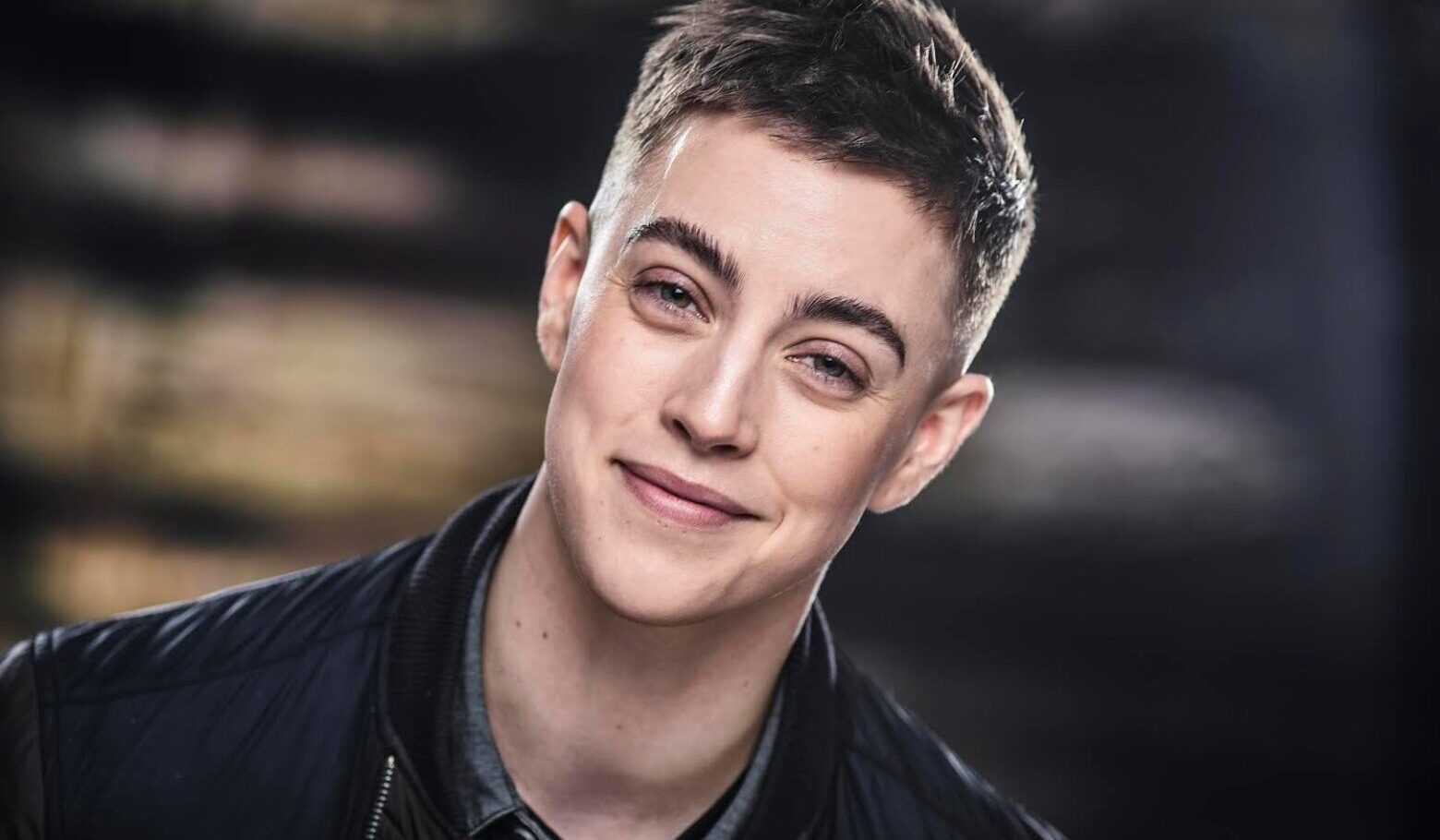Ess Hödlmoser: Circus, Identity & Art in Motion

In this insightful episode of the StageLync Podcast, Anna speaks with Canadian performance artist and author Ess Hödlmoser, known for their daring circus acts and richly layered artistic works. From a surprising entry into circus arts following a brain injury, to creating the powerful aerial straps piece Barbette, Ess shares a deeply personal, political, and creative journey that challenges norms and redefines the performance landscape. Check out this preview, and don’t miss the full episode next week!
How did you go from being a Muay Thai champion to a circus artist?
After a traumatic brain injury ended my semi-pro fighting career, I was lost. A former sparring partner dragged me to a circus class. I hated silks at first, but the intense physicality drew me in. Eventually, I found my way into contortion and later transitioned to aerial straps.
What inspired your aerial straps act Barbette?
During the pandemic, I discovered Barbette’s story—a gender-bending circus icon from the 1920s. His journey resonated deeply with me as a trans artist. I wanted to pay tribute while exploring how gender, artistry, and perception intertwine in performance today.
How did you balance the technical and emotional aspects of the piece?
It took four years. Early versions of Barbette felt technically off or emotionally unclear. I didn’t want to create “sad boy” work; I wanted cheeky, powerful, politically aware art. Every detail—from movement to costume to tone—was meticulously refined.
How do audiences interpret your final reveal in Barbette?
Some think the last, shirtless male-presenting version is my “true self,” but it’s just as constructed as the rest. That character required ballet training and research. It’s fascinating to see what people project onto performance and identity.
Where do you think circus arts are headed?
It’s a challenging time. Funding cuts are hitting hard. Big shows are becoming rarer, and the future may lie in nimble, emotionally impactful productions like People Watching. There’s room for commercial and experimental circus, but we need to get creative to survive.
Key Insights from the Podcast
- Art as Reinvention
Ess Hödlmoser’s journey from classical violinist to Muay Thai champion to circus artist shows how identity and artistry can evolve through adversity, particularly after a life-altering brain injury. - The Power of Storytelling in Circus
Barbette isn’t just an aerial straps act—it’s a layered, historically rooted exploration of gender, performance, and perception, inspired by a 1920s queer circus legend. - Physicality Meets Philosophy
Hödlmoser blends rigorous circus training with deep academic inquiry, drawing on disability studies, gender theory, and historical research to inform their work. - Artistic Frustration is Part of the Process
They openly discuss the gap between taste and ability, and how learning to sit with discomfort is essential for any artist chasing mastery. - The Future of Circus Is Lean and Local
With arts funding dwindling and large productions shrinking, the next wave of circus may prioritize mobility, intimacy, and innovation over spectacle.
Headshot by Denise Grant
Editor's Note: At StageLync, an international platform for the performing arts, we celebrate the diversity of our writers' backgrounds. We recognize and support their choice to use either American or British English in their articles, respecting their individual preferences and origins. This policy allows us to embrace a wide range of linguistic expressions, enriching our content and reflecting the global nature of our community.
🎧 Join us on the StageLync Podcast for inspiring stories from the world of performing arts! Tune in to hear from the creative minds who bring magic to life, both onstage and behind the scenes. 🎙️ 👉 Listen now!
